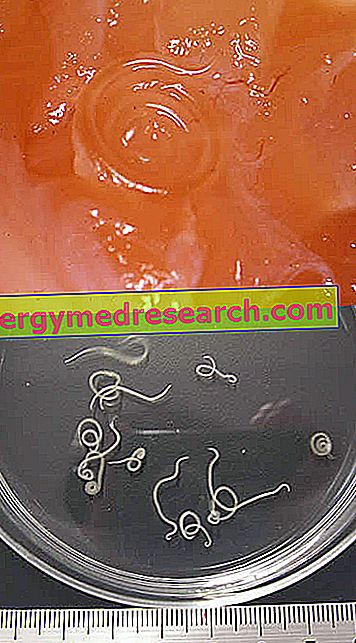Corn oil extraction
See also: corn oil in cosmetics
Corn oil is extracted from the germ contained in the caryopses of the homonymous plant ( Zea mays ), that is from that species of particle that is at the apex of the grain of corn. The yield is not very high, reaching only 15-20%, but given the great use of this cereal for the extraction of starch, it is in any case convenient to recover the germ and then extract and market its oil.

Nutritional properties
For a long time this convenience was particularly high for the Italian market, in the wake of a widespread advertising campaign launched since the 1970s; to corn oil revitalizing properties were ascribed - supported by leaps of fences and various stunts - and an important preventive action on cardiovascular diseases. In fact, corn oil has excellent food requirements, being indicatively composed of 40-60% linoleic acid, 20-40% of oleic acid (fat typical of olive oil) and for only 10- 15% from palmitic acid. The vitamin E content is also excellent, very high in raw maize oil but significantly reduced by grinding. Another interesting feature of corn oil is its resistance to peroxidation, which it acquires only after a refining process (to which virgin olive oils are not subjected). In fact, as soon as it is extracted, corn oil has an excessive concentration of free fatty acids, a dark, red-amber color, and a high content of phospholipids, with traces of waxes. All these elements are removed during refining, with which corn oil acquires limpidity, clarity, neutral taste and oxidation resistance, despite the many triglycerides rich in polyunsaturated fatty acids. This characteristic makes refined corn oil an acceptable choice for frying; not surprisingly, depending on the sources, a smoking point between 160 and 210 ° C is ascribed to it.

In the kitchen and in the food sector, corn oil is used as a table oil, for cooking and as a base for the production of margarine, through the hydrogenation process of vegetable oil mixtures.
Oil that is good for the heart?
As for the much-publicized ability to prevent cardiovascular diseases, it must be said that this characteristic is typical of all seed oils, but on one condition: these oils must be used in moderation and sobriety, without exceeding in doses, to avoid introducing too many calories. The consequent overweight would in fact cancel all the protective effects of these precious foods; furthermore, to exhibit this action, corn oil and other seed oils must necessarily be used in partial replacement of animal fats, not in addition to them; it is also important that they be included in a diet that provides the right doses of essential omega-three fats, which abound only in fish and its oil, in seeds and linseed oil, in hemp oil and in canola oil . The modern food style, in fact, is characterized by an excessive intake of omega-six - abundant in vegetable oils, including corn - and an insufficient introduction of omega-three (EPA, DHA and their precursor, acid alpha linolenic acid). This imbalance, according to various studies, increases the susceptibility to a series of physical and mental disorders, enhancing the inflammatory state that accompanies many diseases of the modern style.
Corn oil, preferably raw, can therefore find space in the daily diet according to individual preferences; however, there are no particular reasons to prefer it to other seed oils, let alone virgin olive oils. Furthermore, corn oil should be included in a food context that includes the consumption of at least three weekly portions of fish and a reduction in saturated fats below 7-10% of daily calories.



